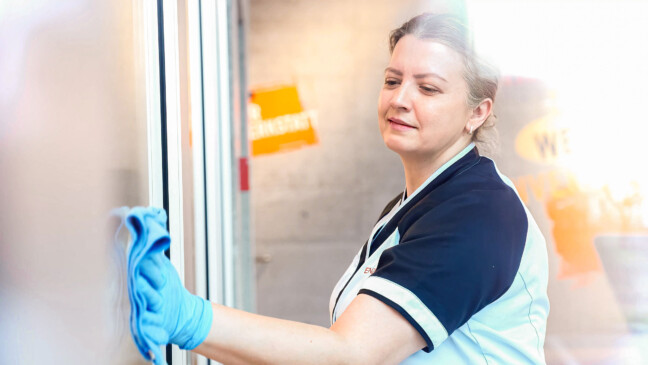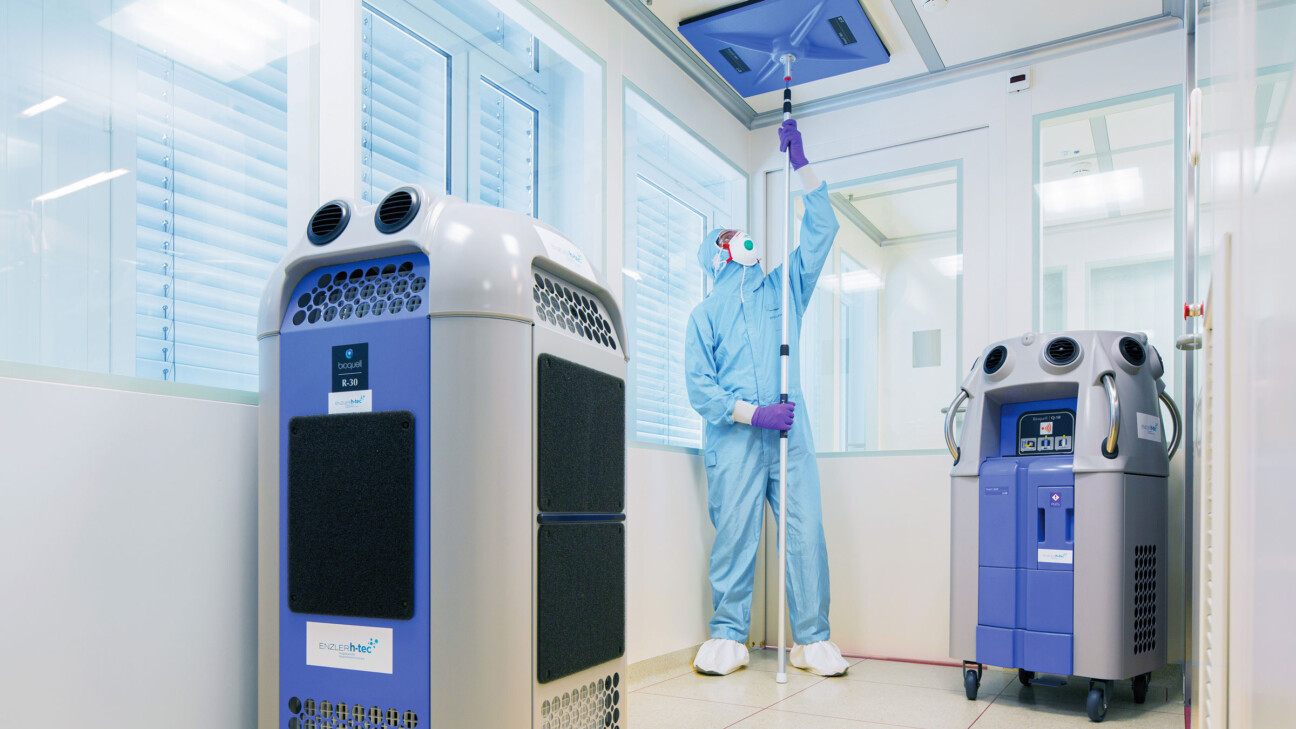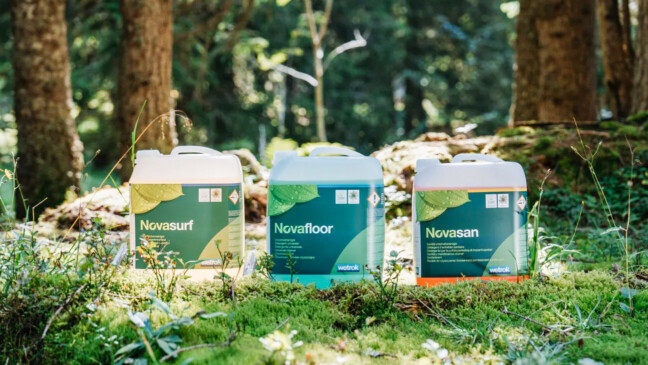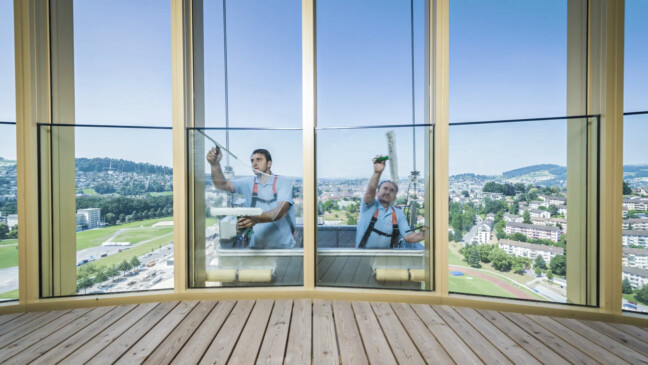
05.07.23
BPR Compliance: what does it mean for your Hydrogen Peroxide Disinfection System?
EU regulation 528/2012 Biocidal Products Regulation (BPR) applies to all biocidal products. The regulation is designed to control the selling or “placing on the market” of biocidal products and involves the analysis of a products performance (efficacy), toxicity, environmental fate and risk during use. The manner in which a product is intended to be used is an important factor in BPR product assessment and products must be authorised for use in accordance with specific categories called Product Types (PTs). There are 22 different PTs ranging from PT1 “Human hygiene” through to PT22 “Embalming fluids”.

Ecolab’s Bioquell hydrogen peroxide vapour (HPV) disinfectant – Bioquell HPV-AQ – and associated vaporisation systems have received a Union Authorisation from the European Chemicals Agency (ECHA) approval number EU-0027469-0000, which has been written into European Law under implementing regulation 2022/1226. The authorisation covers the use of the Bioquell technology in PTs 2 (Public Area), 3 (disinfection of animal cages / racks in biomedical and research facilities) and 4 (Food & Feed Areas). Biocidal products must be authorised for use within a specific PT to be marketed and used for that application – for example if a product is authorised solely for use in PT1 (Human Hygiene) applications, it cannot be used as a disinfectant for hospital surfaces, which requires a PT2 authorisation. Users should ensure that a disinfectant product or system is authorised for their specific intended use.
The BPR is a two-step process. Firstly, biocidal active ingredients must be authorised as “Actives”. Hydrogen peroxide was given an authorisation in 2015 for a range of PTs. Once an active has been authorised, manufacturers of biocidal products containing that active are required to submit a technical dossier to a European Competent Authority (CA) by a specified deadline. In the case of hydrogen peroxide this deadline was the 1st February 2017. If a anufacturer of a product did not submit their dossier by the specified deadline, the product is considered an unauthorised biocidal product and it is illegal to use or market that product.
In January 2021, the United Kingdom left the European Union through the Brexit process. The UK Health and Safety Executive (HSE) established the Great Britain Biocidal Products Regulation (GB BPR) based on the EU BPR. Disinfectant products authorised under EU BPR on the UK market prior to the 31st December 2020 retain their UK authorisation as long as the authorisation holder is established in the UK. Disinfectant products produced using EU BPR authorised active substances, on the UK market without EU BPR authorisations, had to submit dossiers to the HSE prior to the 29th June 2021. Failure to submit a dossier meant the disinfectant product had to be removed from the market within 6 months. Ecolab submitted an application for Bioquell HPV-AQ to the HSE on 16th June 2021.
Automated airborne disinfection systems – efficacy requirements
Bio-decontamination systems that distribute a biocide via an automated spray, mist, vapour, etc. are considered “automated airborne disinfection systems” and the biocidal product (i.e. in the case of hydrogen peroxide based systems, the hydrogen peroxide liquid) must be tested in combination with its application technology / system. The disinfectant product registration will specify the specific parameters or characteristics of the delivery system that can be used with the product. For example, a product tested with an aerosolbased delivery system may only be used with an aerosol delivery system with the same performance characteristics – the product could not be used with a vaporisation or misting based delivery system, or an aerosol system that did not have performance characteristics in line with the product authorisation. Users of automated airborne disinfection systems should ensure that the product disinfectant / delivery system combination they are using will be compliant with this requirement under the BPR.
The ECHA has produced a detailed guidance document on the efficacy assessment requirements for biocidal products. Automated airborne disinfection systems such as Bioquell’s must be tested against EN 17272:2020 in accordance with the product type (PT) use scenarios claimed by the product.
EN 17272 is a challenging test against a wide range of microbiological organisms including bacteria, viruses, fungi, yeasts, spores, mycobacteria and bacteriophage. It is based on the long-standing French standard NFT 72-281, but includes additional requirements such as a distribution test and claims for small enclosures. The soiling conditions used during the test must be relevant to the claimed use scenario. For example, a hydrogen peroxide-based system intended to be used in a hospital, must pass the “Human Health” section of the test, which stipulates a 5 log reduction of the specified bacterial strains (such as Acinetobacter baumannii), 4 log reduction of yeasts & fungi, 4 log reduction of spores, 4 log reduction of viruses and 4 log reduction of Mycobacterium. A biocidal product may only be marketed and used for the disinfection of surfaces in accordance with the microorganism groups for which it has been authorised. For example, a product tested and authorised for use against bacteria, yeasts and spores is not authorised to be used against viruses, fungi, etc. It is very important for users of disinfectant products to discuss their efficacy requirements with product manufacturers to ensure that the products that they are using or intending to use are authorised for use against the microorganisms they are targeting.
The EN 17272 test methodology intends to assess the application of the biocide via its associated delivery system or generator in standardised conditions that allow regulators to understand a systems performance and users to compare technologies. The organisms are dried onto stainless steel tokens, which are located on the opposite side of the enclosure to the generator, facing away from it. In the distribution part of the test, the tokens are placed in the corners of the enclosure facing the walls and ceiling / floor to test the efficacy of the disinfectant at the extremities of the enclosure and the effects of environmental parameters such as gravity on the products dispersion. The distribution and efficacy tests are required to be performed in both large (30 – 150m3) and small (0.25 – 4m3) enclosures depending on the manufacturers intended use. For example, a product intended to be used solely in enclosures greater than 4m3 does not require testing in a small enclosure and its regulatory authorisation under the BPR will not cover use in small enclosures. The product dose and its required time in contact with the surfaces (dwell time) to achieve the necessary microbial reductions should be described. In accordance with both EN 17272 and ECHA guidance, automated airborne disinfection system cycles must be validated or verified in the actual enclosure where the disinfection is taking place using appropriate biological or calibrated chemical indicators. Biological indicators comprising Geobacillus stearothermophilus are the industry standard performance indicator for oxidation-based automated airborne
disinfection systems such as Bioquell’s.
Ecolab’s Bioquell HPV-AQ Union Authorisation covers the use of Bioquell’s technology in large and small enclosures for PTs 2,3 (animal cage / rack bio-decontamination) & 4 against the broad spectrum of microorganisms including, bacteria, mycobacteria, spores, yeast, fungi, viruses and bacteriophage. It’s 35% hydrogen peroxide solution combined with its Bioquell microcondensation process results in rapid and efficacious cycles. Bioquell’s validated cycle times based on EN 17272 standardised testing have dwell (contact) times of 35 minutes, compared to competitor technologies such as Steris Vaprox (3 to 6 hour dwell time1) and Phileas O2Safe (2 to 3 hour dwell time2). Many automated airborne disinfection system manufacturers rely on the BPR authorisations held by chemical manufacturers to support the use of their bio-decontamination systems. As the chemical manufacturers are not the providers of the automated airborne disinfection machines, their authorisations may not cover the use scenarios and claims made the disinfection machine manufacturers; or may have limitations that restrict the disinfectants use compared to the intended use of the machine manufacturer. For example, the Union Authorisation3 for the Solvay Interox 35% hydrogen peroxide states the use of the product for surface disinfection of enclosures in filling isolators by aerosolised or vaporised hydrogen peroxide is restricted to enclosures with a volume between 15m3 to 150m3. The authorised use of the product does not cover isolators smaller than 15m3. This may pose a legal compliance issue for users with <15m3 isolators whose vaporised hydrogen peroxide bio-decontamination systems utilise the Solvay Interox 35% product.
Users of automated airborne disinfection systems and facilities looking to purchase such systems should question manufacturers as to the status of their product authorisations under the BPR and request specific details of the products authorised use (such as approved enclosure size, microorganisms, PTs, cycle contact times, etc).
Please contact Ecolab (Switzerland) Ltd. for further information on the application and use of Bioquell’s technology.
Referenzen:
- Steris Vaprox BPR SPC (Ireland) – https://echa.europa.eu/documents/10162/77d06b18-6e78-7a1b-1614-0162b0b86d25
- Phileas O2Safe BPR SPC (Ireland) – https://echa.europa.eu/documents/10162/d76c72ba-7d4c-4fa0-f52e-4f7b8cad139b
- Solvay Interox SG 35 / Interox SG 35 Plus (Union Authorisation) – https://eur-lex.europa.eu/legal-content/EN/TXT/PDF/?uri=CELEX:32022R1232&from=EN


Tell us what you think
Be the first to comment this post.
You must be logged in to leave a comment.